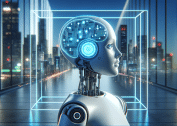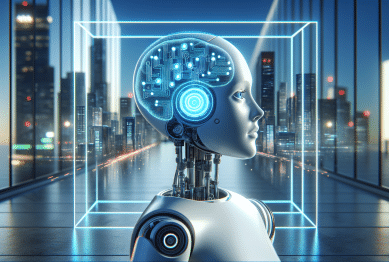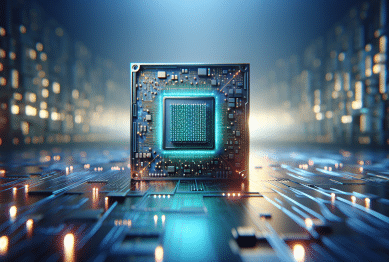Explore how artificial intelligence is transforming everyday routines, from smart homes and personalized healthcare to next-gen transportation and data privacy. This guide unpacks practical impacts, emerging trends, and the future outlook for AI integration across key parts of modern life.
Unveiling Artificial Intelligence in Everyday Environments
Artificial Intelligence (AI) may sound complex, but its influence is filtering into the background of daily experiences. Smart speakers, predictive text in smartphones, and digital assistants like Alexa or Google Assistant showcase this evolution. They make routines a bit smoother and interactions much more intuitive. Many people encounter machine learning technology through these tools, often without realizing the depth of automation and personalization that operates right behind the scenes.
What powers this quiet revolution? Pattern recognition and data processing. AI analyzes habits, preferences, and even speech patterns to adjust lighting in homes, suggest playlists, or recommend new products online. For those interested in smart home technology or voice-activated devices, examining how these conveniences are delivered can shed light on the impressive speed at which AI learns and adapts to unique needs. The blend of convenience and subtlety is shaping a smart environment with boundless opportunity for innovation.
It’s not just about comfort and ease. Artificial intelligence also learns from user interactions, using neural networks to improve accuracy and predict needs. This creates a dynamic relationship—one where your technology grows more effective as you use it. Over time, this kind of adaptive learning not only boosts efficiency but also helps to spot potential problems early, such as identifying home security risks or powering energy-saving recommendations. The promise lies in its seamless, almost invisible partnership with daily routines.
Healthcare Personalization Powered by AI
Data-driven precision is charting new pathways in healthcare, thanks to artificial intelligence. Medical AI systems assist clinicians in diagnosing diseases, predicting patient outcomes, and optimizing treatment schedules with greater precision than ever before. By examining huge datasets, from genomic profiles to imaging scans, these platforms support evidence-based medical decisions for both practitioners and patients. Many people now use health apps that monitor heart rate, recommend exercises, or manage medication schedules—all backed by advanced algorithms.
This technology does more than analyze numbers. Wearables powered by AI provide real-time health monitoring, alerting individuals to irregularities and prompting timely interventions. For those managing chronic diseases, these early-warning systems can mean the difference between minor adjustments and emergency care. Hospitals increasingly leverage machine learning to anticipate patient needs, streamline administrative tasks, and tailor interventions to the individual’s genetic makeup or lifestyle, making precision medicine more accessible to all.
Transparency and ethical use remain at the core of AI’s journey into healthcare. As these systems grow capable of interpreting everything from sleep cycles to early signs of illness, questions around privacy, data ownership, and algorithmic bias continue to emerge. Understanding the careful balance between personalization and privacy helps patients and providers navigate this transformative technology. The ultimate benefit? Improved health outcomes, more proactive care, and personalized wellness journeys for all, shaped by data but centered around the human experience.
Smart Mobility and Transforming Transportation
AI is changing transportation worldwide. From predictive maintenance in public transit to real-time route optimization, machine intelligence is making commutes faster, safer, and less stressful. Autonomous vehicles—once the stuff of imagination—are now navigating city landscapes, learning from millions of data points every second. These smart cars don’t just drive; they sense traffic, anticipate dangers, and respond to their surroundings in ways that traditional vehicles cannot.
Ride-sharing platforms and urban mobility services use artificial intelligence to match drivers and riders efficiently, lowering wait times while maximizing resource use. Predictive analytics determine which areas need more vehicles, balancing demand and keeping urban mobility agile. For logistics, AI software refines supply chain operations, predicting delivery times and optimizing routes to minimize fuel consumption and reduce environmental impact. The result? City infrastructure adapts to emerging needs almost in real time.
Challenges remain as transportation becomes more data-driven. Machine learning tools must constantly adapt to unexpected events—like road closures, weather disturbances, or changing regulations. But AI’s adaptability holds promise. Municipal leaders use smart city data to fine-tune transportation policy, decrease congestion, and improve public safety. Looking forward, the relationship between artificial intelligence and urban mobility will deepen, ensuring smarter, more sustainable cities for future generations.
Data Privacy, Security, and Ethical Considerations in Modern AI
With great power comes great responsibility—especially as artificial intelligence processes sensitive data. From private conversations with digital assistants to personal health metrics, the sheer volume of information passing through smart systems is staggering. Essential to modern AI are protocols for privacy, transparency, and responsible algorithm design. Users are increasingly seeking to understand how their data is collected, stored, and used within various technologies they trust.
Organizations must adhere to strict data governance frameworks to protect user trust. Encryption, anonymization, and user consent pathways are fundamental safeguards. Advances in AI have triggered new debates on algorithmic bias—as decisions traditionally made by humans are now influenced by data patterns. For technology to serve fairly, researchers and industry leaders focus on removing biases from data sets and enforcing transparent decision-making processes in machine learning applications.
Education around digital literacy and best practices becomes critical. As artificial intelligence matures, both businesses and users are encouraged to stay informed about evolving policies, regulations, and ethical trends. The aim is to ensure AI’s benefits don’t come at the cost of personal privacy or societal well-being. By staying up to date on security standards and advocating for clear guidelines, everyone can play a role in shaping a tech landscape that is both innovative and trustworthy.
Workplace Revolution: AI’s Role in Modern Careers
Artificial intelligence is redefining the future of work. Automated tools now handle routine administrative tasks, freeing professionals to focus on creative and strategic pursuits. AI-powered platforms help with everything from candidate screening in hiring to performance analytics in employee development. These advances improve efficiency, but they also require new skills—data literacy, digital collaboration, and lifelong learning—across industries from finance to healthcare.
Collaboration between people and machines is becoming the standard. In creative industries, AI aids in generating music, graphic designs, or marketing content, supplementing but not replacing human intuition. Meanwhile, in technical roles, software equipped with machine learning accelerates product development, predicts equipment maintenance needs, and guides complex decision-making. This integration allows businesses to respond with agility in a rapidly changing marketplace.
Concerns about automation and workforce shifts are genuine and deserve attention. Education systems and businesses are responding with upskilling and reskilling programs to help the current workforce adapt. Many respected organizations provide free courses in machine learning, data analysis, and digital skills to support this transition. The workplace of tomorrow is collaborative, diverse, and innovative—where humans and machines learn and progress together.
Future Visions: Where Artificial Intelligence Is Headed Next
Anticipation around AI’s future centers on its potential to drive big breakthroughs. Researchers envision smarter medical diagnostics, autonomous disaster response systems, and learning robots that collaborate naturally with people. The next wave of artificial intelligence may extend beyond screen-based devices, integrating with physical infrastructure to create adaptive environments—from smart classrooms to precision agriculture. This anticipatory shift could improve lives in unexpected ways.
Public discourse around AI is steadily growing. Ethical frameworks, transparency, and open-source development are top priorities for researchers looking to avoid unintended consequences as systems become more autonomous. Many experts advocate strongly for inclusive design and diverse data sets to foster AI solutions that benefit everyone equally. It’s a dynamic field, rich with possibility and responsibility.
Staying informed empowers individuals and organizations to shape how AI unfolds. Whether through exploring new research, understanding regulatory developments, or joining digital literacy initiatives, every engagement paves the way for a more mindful tech society. Artificial intelligence is not just a tool—it’s a partner in the continuous evolution of human potential.
References
1. National Institute of Standards and Technology. (n.d.). AI Risk Management Framework. Retrieved from https://www.nist.gov/itl/ai-risk-management-framework
2. U.S. Department of Transportation. (n.d.). Automated Vehicles for Safety. Retrieved from https://www.nhtsa.gov/technology-innovation/automated-vehicles-safety
3. World Health Organization. (n.d.). Ethics and Governance of Artificial Intelligence for Health. Retrieved from https://www.who.int/publications/i/item/9789240029200
4. U.S. Department of Health & Human Services. (n.d.). Improving Health and Health Care through Artificial Intelligence. Retrieved from https://www.ahrq.gov/artificial-intelligence/index.html
5. Brookings Institution. (n.d.). Artificial Intelligence and the Future of Work. Retrieved from https://www.brookings.edu/articles/artificial-intelligence-and-the-future-of-work/
6. MIT OpenCourseWare. (n.d.). Artificial Intelligence. Retrieved from https://ocw.mit.edu/courses/electrical-engineering-and-computer-science/6-034-artificial-intelligence-fall-2010/









